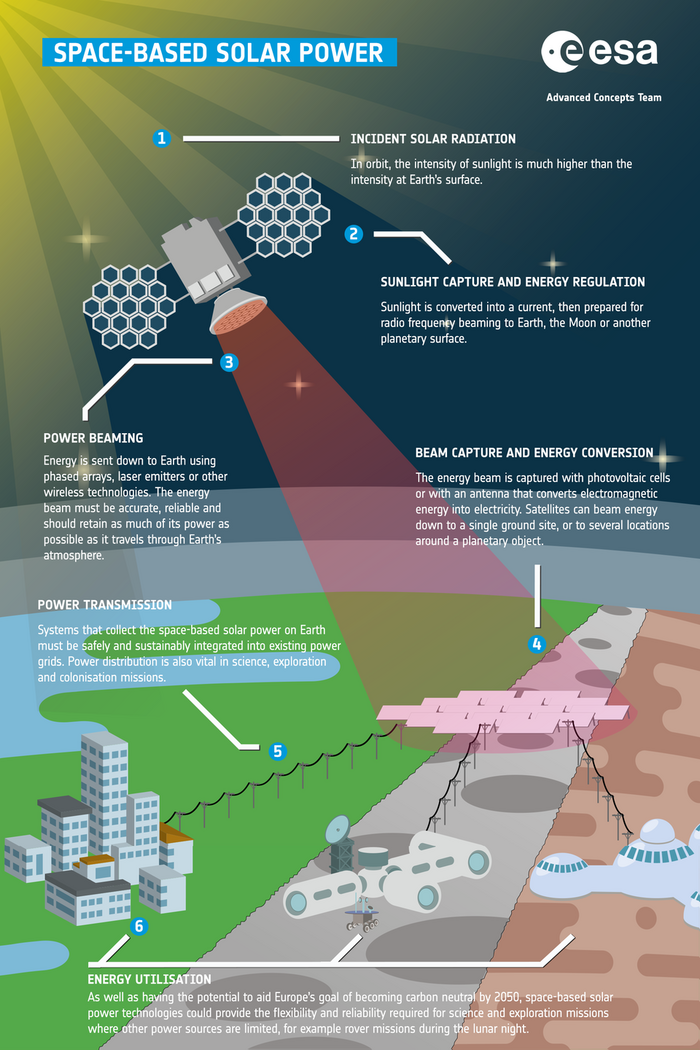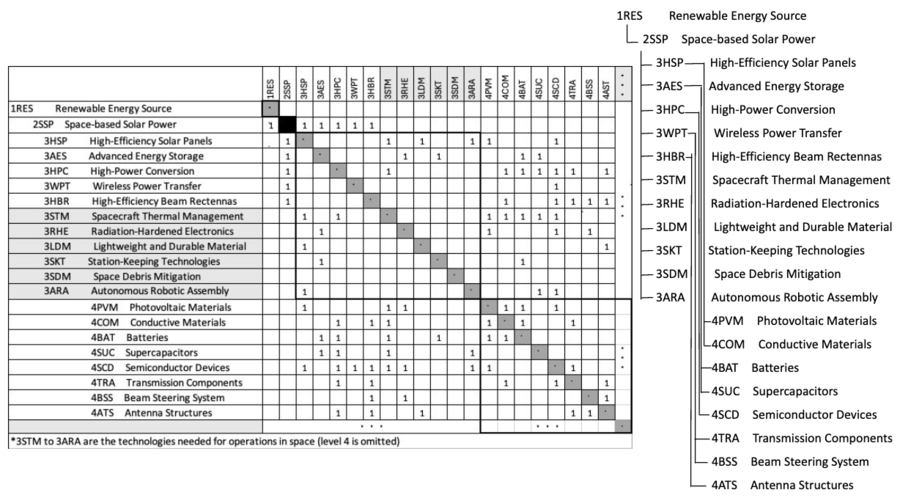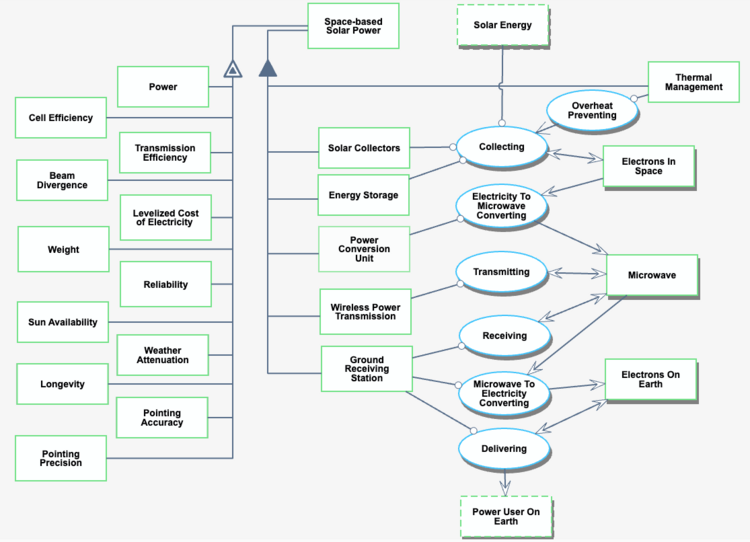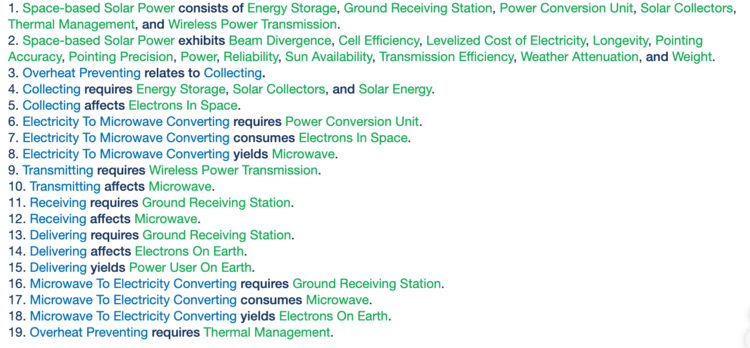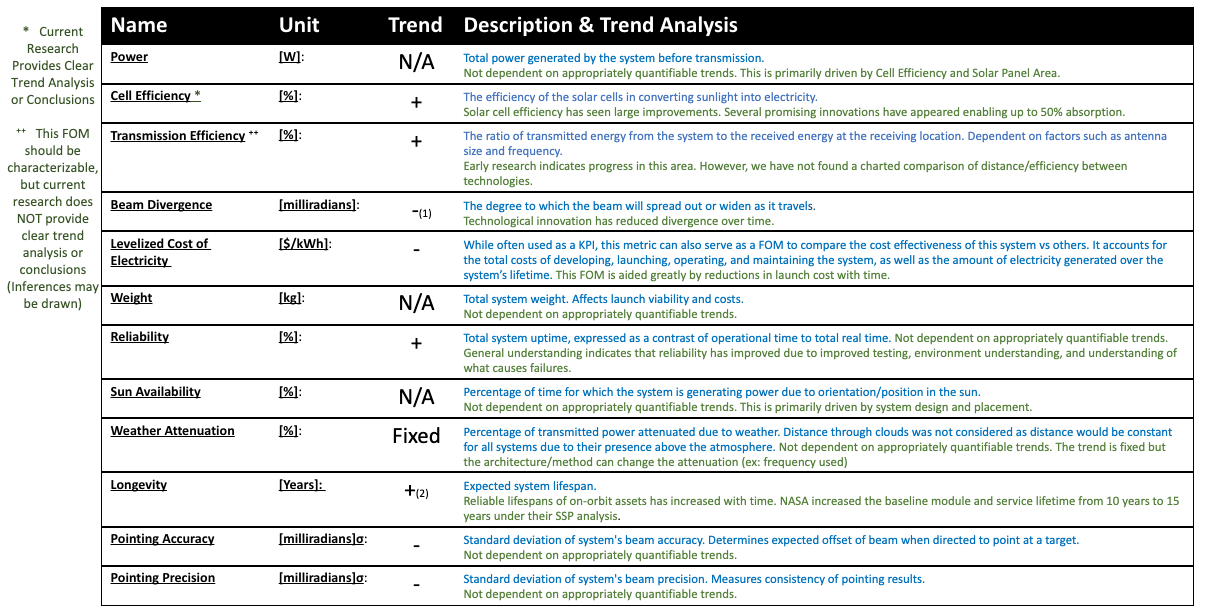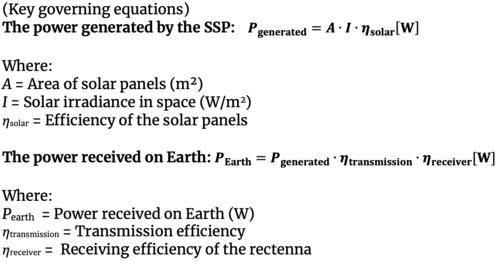Difference between revisions of "Space-based Solar Power"
| Line 11: | Line 11: | ||
[[File: Space-based_solar_power_article.png |700px|center]] | [[File: Space-based_solar_power_article.png |700px|center]] | ||
This technology transforms solar radiation using a spacecraft | This technology transforms solar radiation into energy using the solar panels on a spacecraft, which then wirelessly transmit the energy to a receiving ground station. The captured energy is then converted to electricity before storage and/or distribution. | ||
The large solar array would take advantage of the higher intensity of sunlight outside the planet's atmosphere, as well as unimpeded access to the sun that is unconstrained by the day/night cycle. The electricity is then channeled to a transmitter for long distance wireless transfer via a focused and steerable beam – a key technical challenge. On Earth, the energy would be received and converted back to electricity by the ground station for use. | |||
{| class="wikitable" | {| class="wikitable" | ||
Revision as of 05:18, 10 October 2024
Technology Roadmap Sections and Deliverables
- 2SSP - Space-based Solar Power
We’ve chosen the acronym 2SSP to represent our technology of Space-based Solar Power. The 2 in our acronym implies the system level, within the level 1 system of renewable energy source. Our level 2 system level can be broken down into level 3 subsystems (high-efficiency solar panels, wireless power transfer, etc.) and level 4 components (photovoltaic materials, antenna structures, etc.).
Roadmap Overview
The working principle of Space-based Solar Power is depicted in the below.
This technology transforms solar radiation into energy using the solar panels on a spacecraft, which then wirelessly transmit the energy to a receiving ground station. The captured energy is then converted to electricity before storage and/or distribution.
The large solar array would take advantage of the higher intensity of sunlight outside the planet's atmosphere, as well as unimpeded access to the sun that is unconstrained by the day/night cycle. The electricity is then channeled to a transmitter for long distance wireless transfer via a focused and steerable beam – a key technical challenge. On Earth, the energy would be received and converted back to electricity by the ground station for use.
| Number | Potential Use Cases |
|---|---|
| 1 | Simplify energy delivery to remote areas |
| 2 | Provide more consistent solar power to high latitudes |
| 3 | Provide disaster relief to areas with damaged infrastructure |
| 4 | Recharge other satellites on orbit |
Design Structure Matrix (DSM) Allocation
Roadmap Model using OPM
Figures of Merit
References
[1] Pereira, R. A. M., & Carvalho, N. B. (2022). Quasioptics for increasing the beam efficiency of wireless power transfer systems. Scientific Reports, 12(1), 21138. https://doi.org/10.1038/s41598-022-25471-0
[2] NASA. (2023, October 5). New study updates NASA on space-based solar power. NASA. https://www.nasa.gov/organizations/otps/space-based-solar-power-report/
[3] European Space Agency. 2023. Space-based solar power: seeking ideas to make it a reality. ESA. https://www.esa.int/Enabling_Support/Preparing_for_the_Future/Discovery_and_Preparation/Space-based_solar_power_seeking_ideas_to_make_it_a_reality
